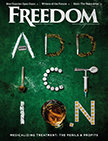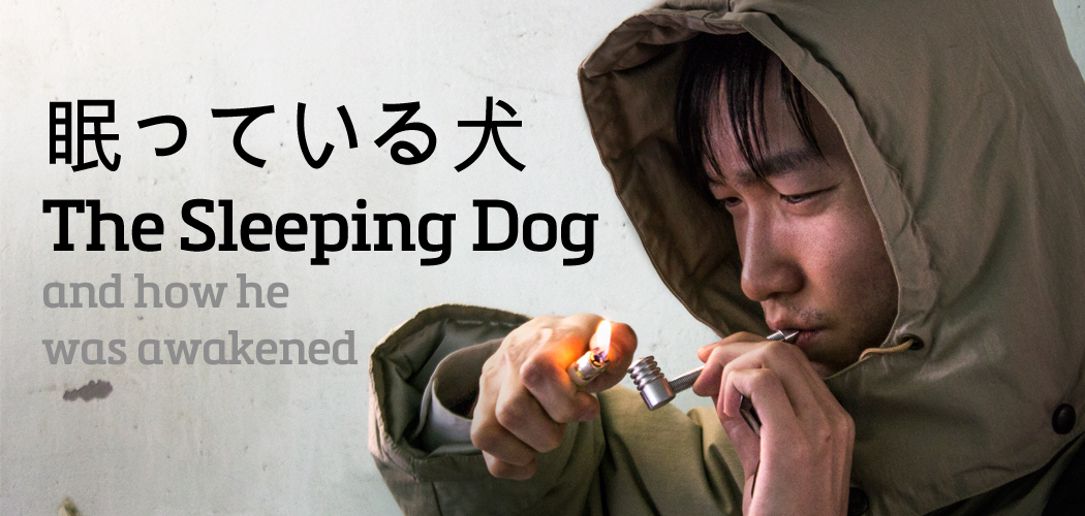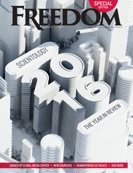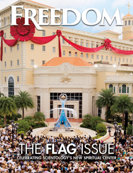The subject was taboo in Japanese society. Though the problem was ravaging the entire nation, such things were not discussed among polite company. As a Japanese adage warned: Don’t wake a sleeping dog.
But Nao Mazaki knew she had no choice but to disregard ingrained social customs and speak out. She was going to do more than wake the dog; she was going to rouse the entire nation. And in 2009, Japan needed to be roused.

The problem: drug consumption was out of control in a country that traditionally had one of the lowest usage rates in Asia. A crackdown on illegal drug labs in Indonesia, Malaysia and the Philippines in 2006 slashed supplies and forced traffickers to find new outlets. By 2009, Japan had become one of the largest consumers of methamphetamine in Asia.
The problem was affecting every strata—lawyers, monks, teachers, students, Sumo wrestlers and high-profile celebrities. In August 2009, the internationally renowned pop singer and actress Noriko Sakai was arrested on charges of possessing illegal stimulants. Narrowly escaping a jail sentence, her life and career were all but shattered. The Sakai national scandal illustrated something more endemic about Japan’s drug crisis: The Japanese people were largely at a loss on how to deal with the problem.
Police continued hard-line enforcement, with drug arrests increasing 44 percent from 2003-09, but these actions had already proven ineffective in halting the spread of drugs. Media coverage of the issue was limited to reporting the latest scandals, leaving the public largely uninformed about what to do. Educators and teachers with little or no information on the dangers of drugs vainly hoped scare tactics would instill sufficient terror into their students to prevent them from getting involved, despite knowing such an approach was likely of no avail.
And as for the general public? Well, don’t wake a sleeping dog.
Nao Mazaki had a different idea. For her, the time had come to do something to combat the scourge in her country. She soon discovered the biggest barrier was a widespread lack of information on the dangers of drugs.
Synthetic drugs were broadly available to children. Young people could buy drugs on the street, off the Internet and even from vending machines outside of their schools.
— Nao Mazaki, Foundation for a Drug-Free World
“Synthetic drugs were broadly available to children,” she said. “Young people could buy drugs on the street, off the Internet and even from vending machines outside of their schools.”
Such drugs were difficult to police. By the time authorities had analyzed the composition of a new substance and labeled it illegal, manufacturers had slightly altered its chemical composition to make a new “legal” version, marketing it in a slightly different but no less deadly form.
Compounding the problem was that the majority of students did not consider synthetic drugs to be dangerous and regarded their use as a matter of personal choice, in the same category as deciding whether or not to smoke tobacco.
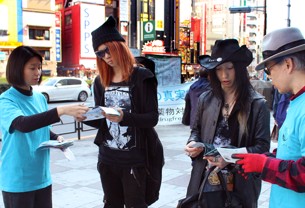
“I called up teachers in one school and told them children were buying synthetic drugs from vending machines outside of their school,” said Mazaki. “But since those drugs were not illegal, the teachers did not know how to stop them. The kids openly insisted the drugs were fine and their teachers had no idea what to say to them.”
Mazaki said she realized then that young people were being given false information about the dangers of drugs and needed to know the truth.
She found the answer in a series of booklets entitled The Truth About Drugs, distributed by the Foundation for a Drug-Free World through the support of the Church of Scientology.

“I could see that the Truth About Drugs program was the answer,” said Mazaki, who is now the director of the Foundation for a Drug-Free World in Japan.
“We had to reach not only students, but teachers, educators, police, government officials, anyone concerned about handling the problem.”
The first step was massive public distribution—nearly half a million—of the booklets and other Truth About Drugs educational materials to schools throughout the country, followed up with in-person drug education lectures by Mazaki and other volunteers. Soon Mazaki became one of the media’s most sought-after sources on the dangers of synthetic drugs.
I knew the solution was education. I used every opportunity to make people aware of how deadly these drugs really were.
— Nao Mazaki, Foundation
for a Drug-Free World
At the same time, a series of public service announcements on the dangers of drugs were aired on television stations throughout Japan. “I knew the solution was education,” said Mazaki. “I used every opportunity to make people aware of how deadly these drugs really were.”
After the campaign caught the attention of Education Newspaper, the largest educational news journal in Japan, editors brought the story to hundreds of thousands of teachers and principals. The message began to go viral. Toei Company, one of the country’s largest television and film production companies, contacted Mazaki to consult on their documentary “Do You Know the Truth About Drugs?” spreading the message of synthetic drug dangers even more broadly.
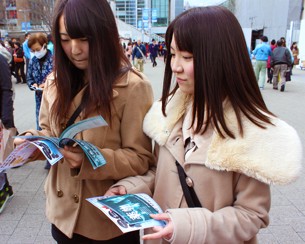
The sleeping dog had not only been fully awakened; he was starting to show teeth. In February 2013, Japan’s Ministry of Health announced more stringent regulations against synthetic drugs, placing an additional 774 substances on the list of illegal narcotics. By December, another 474 were added, raising the total to 1,248.
“That was very significant,” said Mazaki. “Before then there were only 92 drugs on the list of illegal drugs.”
In April 2014, the government announced it was revising the Pharmaceutical Affairs Act to ban import, possession, usage and purchase of more than 1,300 potentially dangerous synthetics and other drugs. That legislation was also significant. Never before had such effective governmental action been taken to fight back against the drug problem.
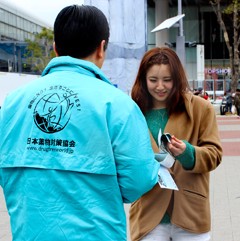
Mazaki said the most important aspect of her campaign and the public action it has stirred is the new perception of synthetic drugs by students and young people. A survey of 5,000 students in 2013 showed that 90 percent considered synthetic drugs to be dangerous, a major shift from earlier polls.
“These are young people who will grow up free from drugs,” said Mazaki. “We haven’t just given them an education; we’ve given them a safer future and a better life.”

